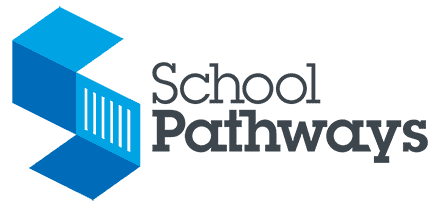Why Optimizing Your Technology Stack Matters in Online Education, and How to Achieve It
EdTech usage among K-12 schools has increased by 99% since the year 2020.
It’s one of many trends originating from the pandemic that has fundamentally changed our way of life. This increase in the use of education technology is so drastic that it begs the question: is it all to our benefit?
While the overall answer leans yes, there are also some qualifiers. For all the possibilities EdTech has created for a wide variety of learning environments, it’s only effective if its users are able to get the most out of it. According to an Edweek survey of teachers, principals, and district leaders, 79% said they felt their teacher colleagues were tired of all the tech use they have experienced over the past two years.
Teachers have to juggle a lot. When they’re already building lesson plans, teaching classes, and tending to the individual needs of their students, having to learn several new technologies is understandably a learning curve.
These pros and cons are especially notable when it comes to online learning environments, which are more reliant on software tools for both administration and delivering the learning itself.
So instead of just investing in more technologies, virtual and hybrid schools should be investing in the right technologies with a holistic view. Between the sheer quantity of EdTech products on the market and the increased complexities for schools offering online education options, it’s become more important for schools to prioritize technology stacks that minimize bottlenecks and make their varied offerings more seamless.
Auditing and optimizing your school’s tech stack can reduce the pain points your staff feels by:
- Training staff quicker
- Lowering overall budget spend
- Reducing manual data management
- Standardizing processes and operations
- Minimizing the amount of tools they have to learn
In this article, we’ll explore how to make EdTech start working for you. Read on to learn some practical steps for auditing and enhancing your online education tech stack.
Audit Your Current Tech Stack
You won’t know how to optimize until you take full stock of what technology you’re currently using and the purpose it serves for your organization. Throughout the audit process, you should be corresponding with stakeholders across your organization to identify where there is alignment and redundancies in the way different departments or personnel are using your tech stack.
Make sure to note a few things for each piece of technology:
- What problem does it solve? How does this particular piece of technology fit into your overall operations? What specific teams rely on it?
- When does your contract expire? You want to make sure there won’t be any gaps in service that could derail your staff’s ability to do their job. If you plan to shift vendors, make sure to implement the necessary systems to avoid any service or workflow disruptions.
- How much does it cost? Does the problem this technology solves justify your spending? Does the solution streamline other operations in a way that brings its own cost savings?
Taking the time to do a thorough tech audit will enable you to prioritize critical needs, optimize budget allocation, and enhance digital efficiency for your organization.
Identify Gaps, Redundancies, and Successes
Are teachers having to manually input grades into multiple systems? Are there data silos between all the different learning environments you support? Which systems are improving workflows, and which are inhibiting them?
Gaps and redundancies in your tech stack not only create unnecessary work for your staff, but they can lead to duplicate records and cause confusion around which datasets are a source of truth. This is especially true in online education, where students may be working in a hybrid environment, turning in assignments through different online portals as well as in a physical classroom.
The goal at this stage of your audit is to determine what is redundant and what is necessary for the success and engagement of your students. From there, you can identify what gaps need to be filled. Interviewing stakeholders who are in the weeds of these processes every day is a good start, as they’ll be able to tell you where those processes break down and cause problems.
Research and Evaluate New Vendors
At this point, your correspondence with stakeholders has keyed you in on what they (and their students) need and where you can improve any processes or capabilities. With this in mind, you can begin to assess both current and prospective vendors to re-configure a combined EdTech stack that best addresses the needs of your school.
This will be a painstaking process that takes time, especially if you offer online education. Online learning solutions are in a niche corner of the education market that is rapidly growing and evolving. There are plenty of new players entering this space you’ll want to evaluate critically—you could just as easily find a diamond in the rough as you could find a solution that doesn’t meet your standards. Remember, you could be locked into a given solution for years to come, so be sure to read the fine print.
As you evaluate which vendors to use (and the specific services you want from them), some good questions to consider are:
- How well does this vendor work with others?
You want to find tools that will easily integrate with one another as much as possible to prevent data silos. While certain vendors offer an entire suite of solutions that are more cost-effective if you invest in the whole package, you still need to consider both your online education and in-classroom needs. You may be able to just expand services with a single vendor. In other cases, you may look for an external tool with broad compatibility that fulfills a specific need.
- What is the vendor’s track record?
The implementation of new tech can be quite the initial load for both your IT team and tech users. You want to be sure that you’ll have ample support from the vendor for the initial transition and onward. It’s also worth considering whether a vendor regularly updates their software and how much they add to their platform over time. A comprehensive tech overhaul isn’t something you want to do every couple of years, so thinking about how scalable a solution is with the long-term trajectory of your organization is important. To get an initial pulse on a vendor, try looking for reviews on third party sites or book a demo to meet your potential partners face-to-face (just don’t forget to have questions prepared to vet whether they can meet your online education needs.)
- How does the vendor meet your compliance considerations?
Consider your state and federal compliance requirements and make sure to verify how a given vendor meets them. How do they address student data privacy and accessibility concerns? Does the vendor have tools to comply with growing virtual learning environment provisions or state-specific solutions for requirements like CALPADS reporting in California?
Once you’ve decided what stays and what goes, be sure to have a rollout plan that accounts for contract expiration dates and implementation periods. This is to minimize any downtime in your operations.
Optimize Your Tech Stack with School Pathways’ Integrated Education Solution
School Pathways specializes in software for all types of online education programs—virtual, hybrid, blended, and independent study. Our suite of comprehensive solutions gives you a centralized source of truth to monitor and enhance student experiences from paperless enrollment to personalized learning programs.
Have questions about how you can optimize your online learning tech stack with School Pathways? We’d love to have a conversation. Reach out today to learn more.

How Educators Can Help Families Make the Right School Choice
Choosing the right school for a child is one of the most important decisions families will make. District schools offer […]

Best Practices for Managing Master Agreements in Independent Study
Evolving technological landscapes, changing philosophies on individualized learning, and enduring consequences of pandemic-era policies have led to a growing demand […]

Measuring Student Engagement: The Key Metrics for Virtual Learning Success
Encouraging engagement produces incredible results in the lives of the students. According to the Online Learning Consortium, high student engagement […]





